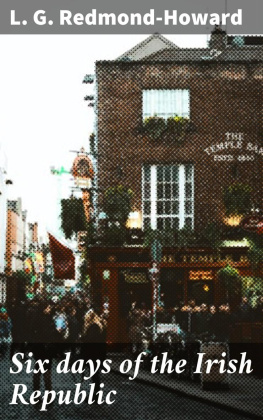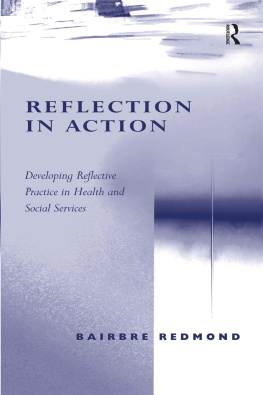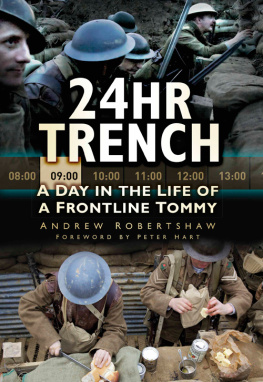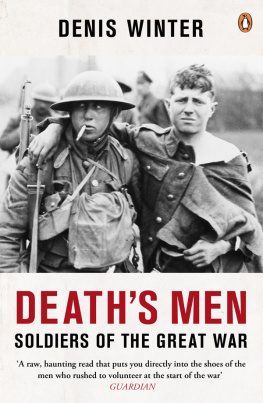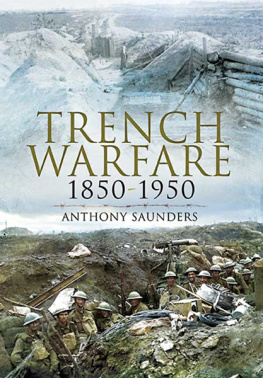This edition is published by PICKLE PARTNERS PUBLISHING www.picklepartnerspublishing.com
To join our mailing list for new titles or for issues with our books
Or on Facebook
Text originally published in 1917 under the same title.
Pickle Partners Publishing 2013, all rights reserved. No part of this publication may be reproduced, stored in a retrieval system or transmitted by any means, electrical, mechanical or otherwise without the written permission of the copyright holder.
Publishers Note
Although in most cases we have retained the Authors original spelling and grammar to authentically reproduce the work of the Author and the original intent of such material, some additional notes and clarifications have been added for the modern readers benefit.
We have also made every effort to include all maps and illustrations of the original edition the limitations of formatting do not allow of including larger maps, we will upload as many of these maps as possible.
TRENCH PICTURES FROM FRANCE
BY,
MAJOR WILLIAM REDMOND
M.P.
Killed in Action, June 1917
With a Biographical Introduction by E. M. SMITH-DAMPIER
Your cause is one, Dark Rosaleen,
Where I know not wrong from right;
But I know the eyes of a fairy queen,
And the heart of a gallant knight!
IN MEMORIAM
On, Michael stood on the walls of heaven
And watched the souls come in,
For the hosts of God were up once more
To harry the hosts of sin.
Michael he took the moon for a shield,
And a brand of the burning levin,
And flew to earth through the reek of blood
That hid the stars in heaven.
Michael went down by Weeping Well
To rest him at eventide,
And he saw there a maiden fair,
And a dead man lay beside.
Oh, he looked on her with the piercing eye
Thats pure from spot of sin,
And saw right well the hound of hell
That gnawed her heart within.
And like a cup thats lifted up
With royal wine a-brim
Michael, that looked upon the dead,
Beheld the heart of him.
Look up, thou daughter of earth, look up,
Great grace is thine, I wis!
Lovers hast thou had many a one,
But never a one like this.
Oh, well he knew thy deadly sin
As well he knew thy worth,
For he looked on thee with the eyes of heaven
And not with the eyes of earth.
Daughter of earth, now look thou forth,
And see where the souls of men
Go forth on the night like the wild marsh-fires
That flicker above the fen.
And see where the souls of men rise up
Like stars in heaven to shine!
A jewel set on Our Ladys brow
Is the soul whose love is thine.
And lo, the reek of flame and blood,
Where, like sparks from the nether pit,
The eyes of the ravening hounds of hell
Drive by on the blast with it!
Take heed, take heed lest thy foot go down
Behind the hounds of hell!
Michael he seized his shining shield,
And turned him from Weeping Well.
He turned his face to the reeling hosts,
And brandished the burning levin,
For the quick fought on while the dead looked down
And watched from the walls of heaven!
E. M. SMITH-DAMPIER.
INTRODUCTION
WILLIE REDMOND
A WITTY, joyous partisan in the most bitter of political controversies, who yet made no personal enemies; a man of middle age who left home and career to train as a soldier; a Catholic who, foreseeing death, embraced it in the hope that his blood would bring healing to his own countrysuch was the man whose loss has caused a public grief so general and sincere as to surprise even those who loved him best. Other Members of Parliament before Willie Redmondsome ten or elevenhad died for their country in the war, yet not one of these deaths was felt as deeply as his in both Houses. If Willie could come back, said his widow to me, he would be so surprised, he would wonder what all the fuss was about. It is in these words that we find the key to the secret. The single eyeutter unselfconscious-nessthis is what makes Willie Redmond a typical figure. A thousand men bleed and die; only by a rare combination of qualities does an individual stand out as their spiritual representative, summing up in one hero-figure their finest valour, their most unselfish aims. And this romantic, impetuous Irishman combined them all.
William Hoey Kearney Redmond was born in 1861 at Wexford. To those who believe that the pre-natal influence of that kindly nurse, a particular countryside, may colour a life to its end, it will seem fitting that he should come of a city long associated with his forefathers. The statue of his grand-uncle, John Edward, who in 1859 represented Wexford as Liberal member, stands in Redmond Place, with these words on its pedestal: My heart is with the City of Wexford. Nothing can extinguish that love but the cold soil of the grave.
It was at Parnells invitation that John Redmond entered the House of Commons in 1881. William, at that time lieutenant in the City of Wexford Battalion of the Royal Irish Regiment, resigned his commission in order to take part in the Land League movement, and his twenty-first birthday was spent in Kilmainham Gaol.
At the time when The Invincibles were undergoing trial for the Phoenix Park murders, the Redmond brothers were sent by Parnell to Australia, commissioned to raise funds for the Nationalist cause. It was no easy time for such an errand, yet the journey resulted in the addition of 15,000 to the party funds. It was during this expedition that he met and married Miss Dalton, daughter of a prominent Australian magistrate.
William Redmond was nominated as Parnellite candidate for Wexford in 1883, when he beat The OConor Don, a descendant of kings, by three to one. He sat till 1885, when he was returned for County Fermanagh. In September 1888, during Balfours Secretaryship, he was sentenced under the Crimes Act to three months imprisonment without hard labour, for inciting to resistance of the sheriffs authority during an eviction at Coolroe. (This, by the by, was a period when political prisoners shared the ordinary severities of prison-life.) I undoubtedly, said he, cheered those men when they were defending their homes against unjust eviction, and I shall continue to cheer every man who does so.






